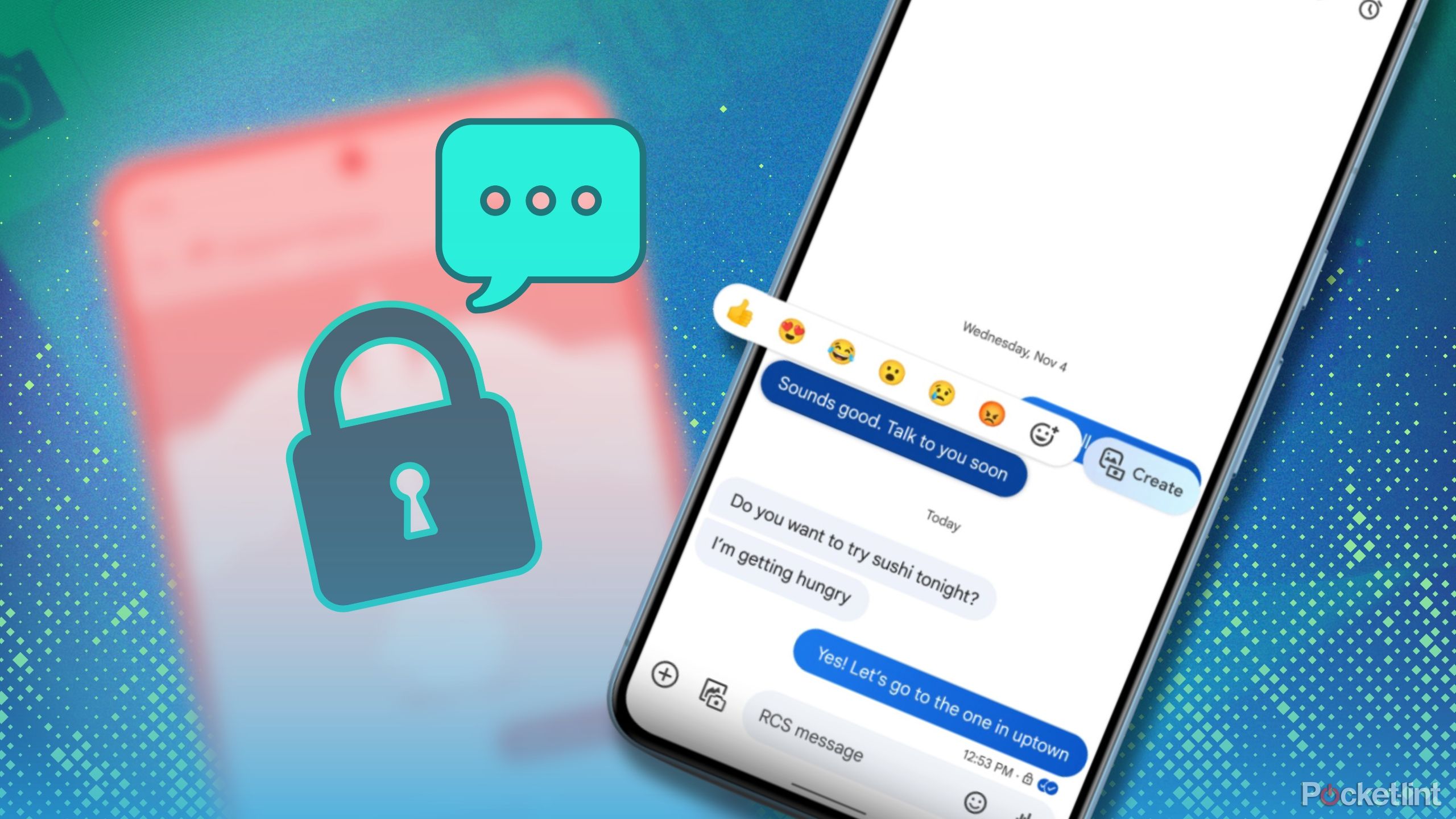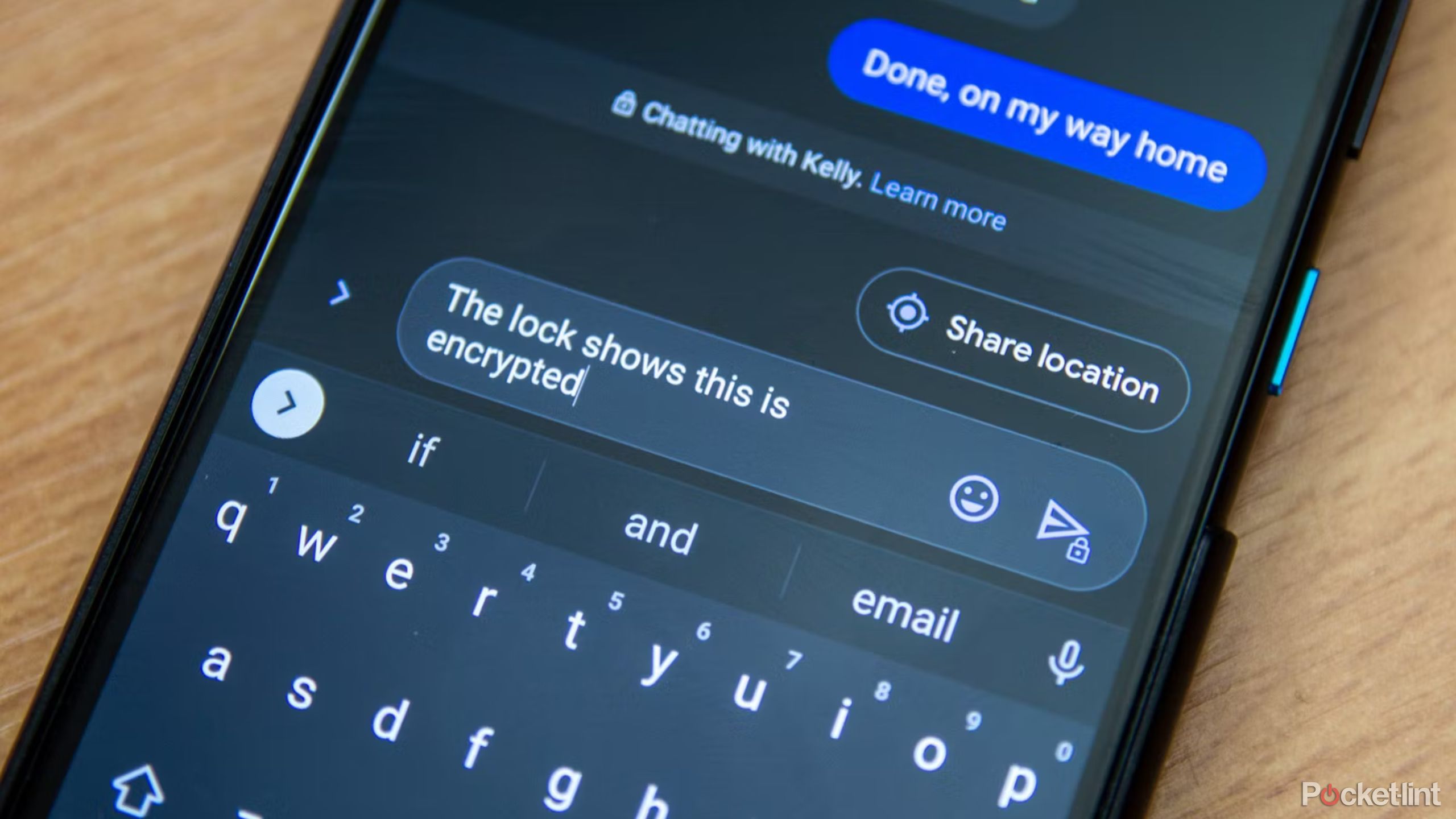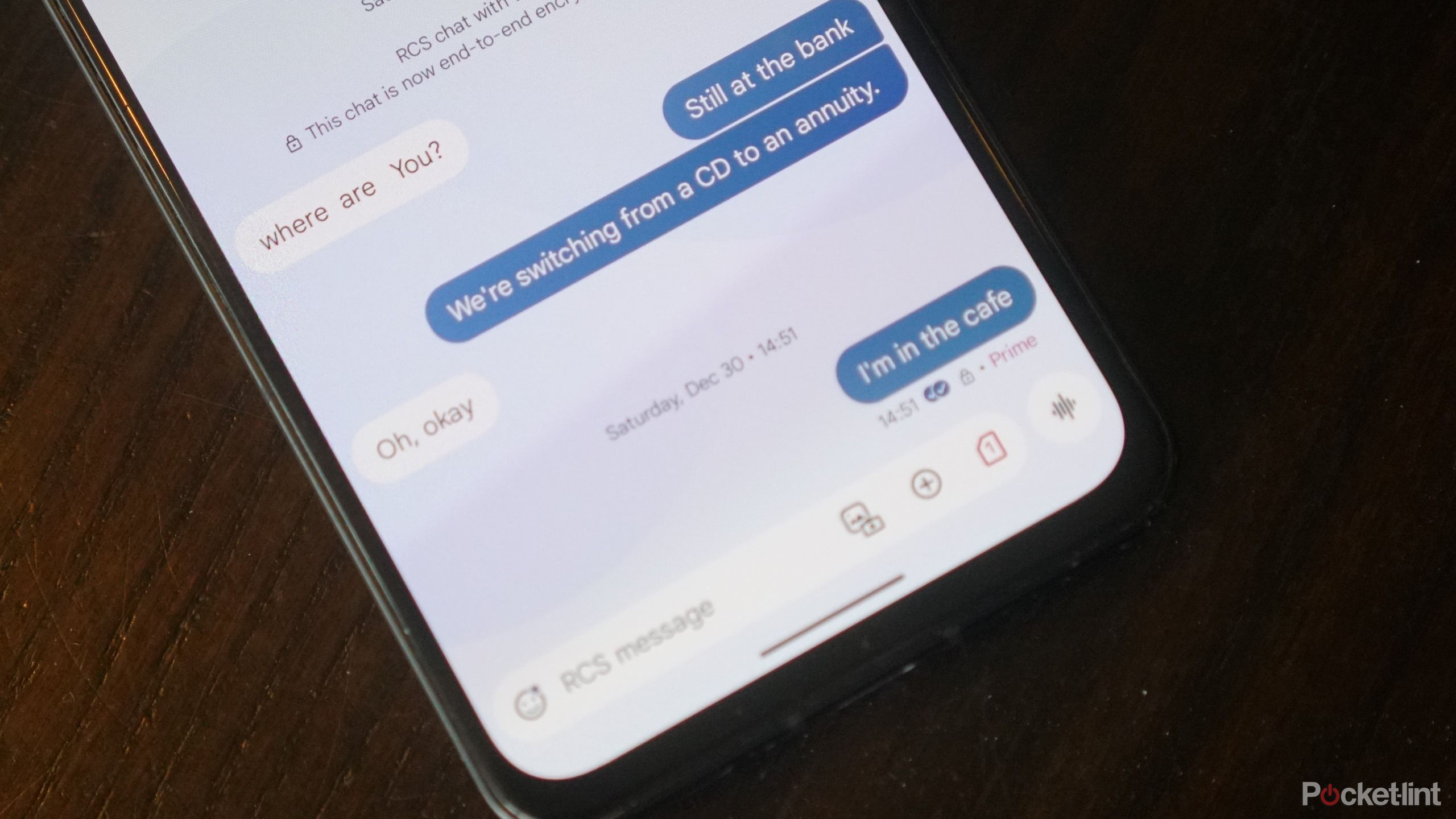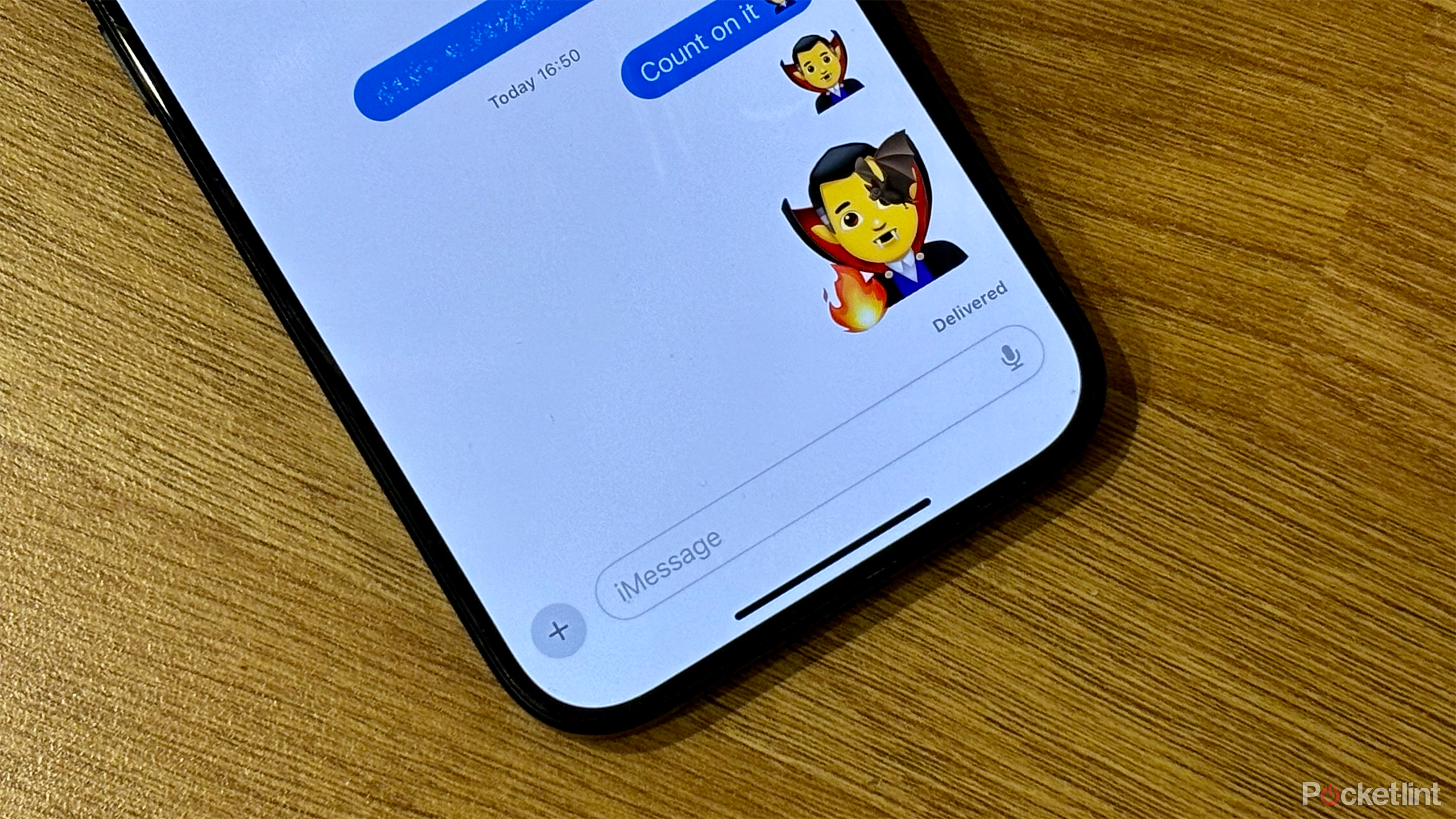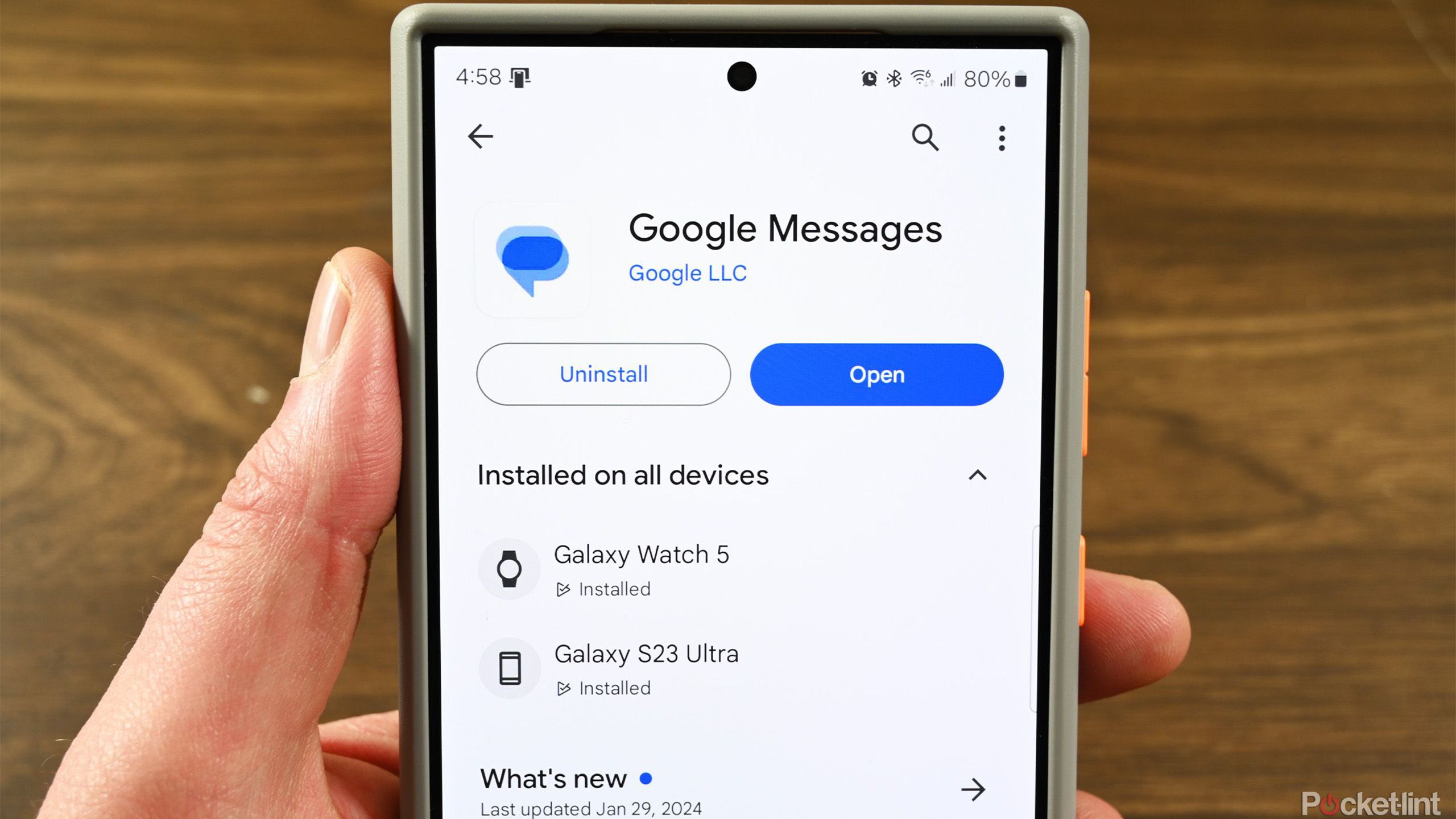Key Takeaways
- Google has pushed RCS as a universal messaging standard, urging Apple to adopt it.
- Verizon & all US carriers now support RCS; it allows for richer messaging like WhatsApp.
- Apple will support RCS with iOS 18 to align with the GSMA Universal Profile, enabling cross-platform messaging.
Since the dawn of smartphones, there’s been a battle between messaging apps. Despite many attempts on Google’s part, there has never been a true messaging competitor to Apple iMessage.
Google’s been pushing another universal standard: RCS. The standoff between the tech giants has been rather public, with Google goading Apple on many occasions, and Apple refusing to support RCS for many years. Then, on November 16, 2023, Apple pivoted, saying it would support RCS in 2024. A moment of unity is coming in cross-device messaging, it seems.
Since Verizon embraced Google’s RCS protocol in February 2024, all Android phones and every major mobile carrier in the US now support RCS messaging. But what exactly is RCS, what features does it have, and which devices is it available on?
Related
How to set up RCS chats on your Android phone
Do you want to turn on RCS messaging on your Android phone? Here’s how to turn it on and everything you need to know about this feature.
What is RCS?
The future of text messaging is here… almost
Rich communication services (RCS) is a protocol between mobile operators and phones. The overall aim of RCS is to replace SMS and MMS messaging, the formats we’re all familiar with as they have been around for years. RCS messaging is very much like WhatsApp, where live chat can take place, including multimedia support, with everything handled via the data network.
RCS messages can carry more information, so users can send things like full-resolution photos, videos, and audio messages to one another.
The biggest advantage RCS Messaging has over SMS — and the reason it was implemented in the first place — is that it improves on the SMS/MMS messaging experience, much in the same way that iMessage does. This means RCS messages can carry more information, so users can send things like full-resolution photos, videos, and audio messages to one another. Popular features like typing indicators and read receipts are also part of RCS messaging.
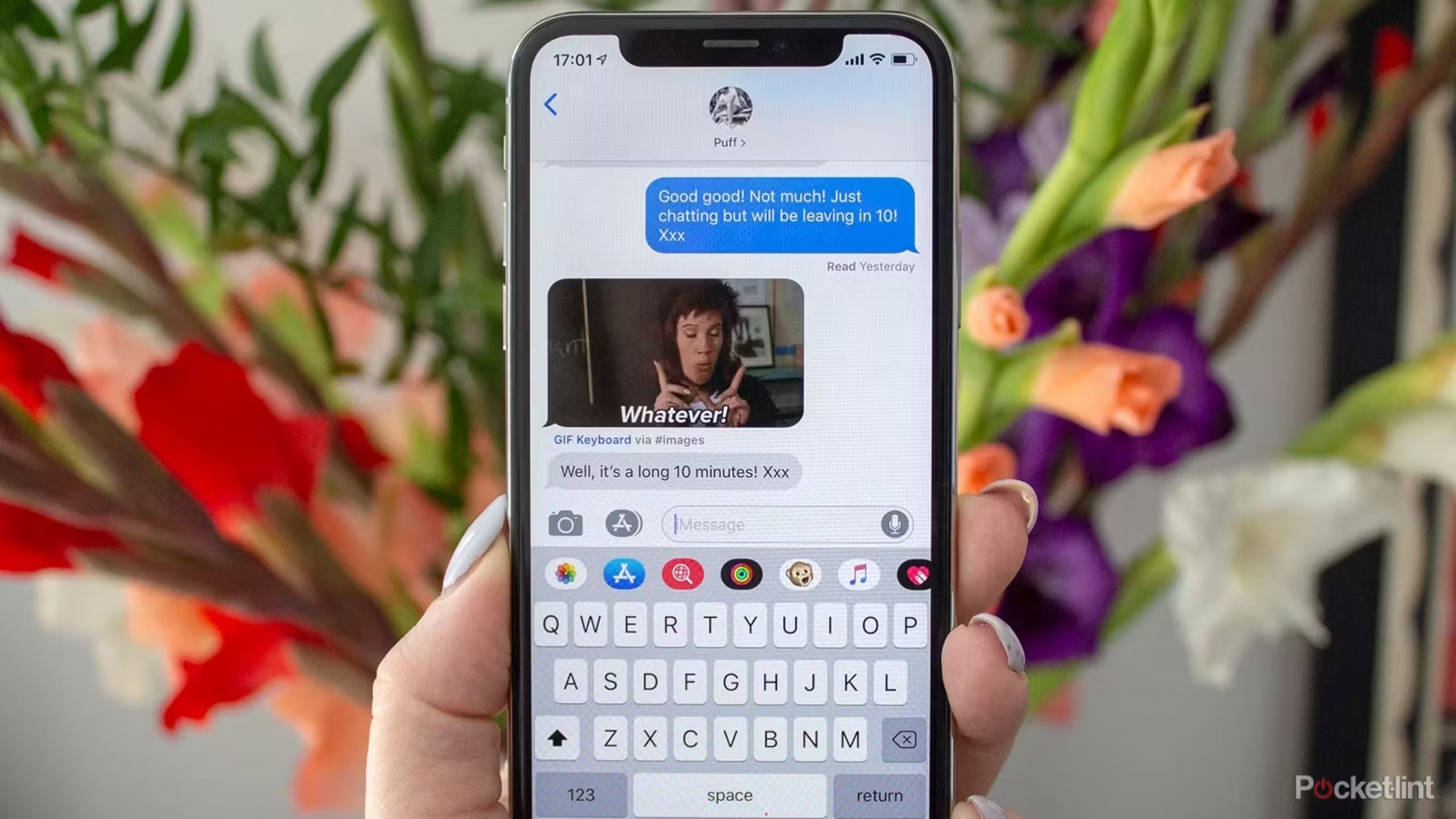
Related
What causes iMessages to not sync to your Mac? Plus, how to fix it
Part of being in the Apple ecosystem is having consistency across your devices. Here’s how to get your iMessages syncing to your Mac again.
Users can carry out video calls with one another directly within the messaging app, rather than having to rely on third-party software. Group messages are possible, and RCS messages also do away with the 160-character limit currently found in SMS messages. Businesses can also use RCS Messaging to send things like boarding passes for airlines, package delivery notifications, and credit card fraud alerts. RCS is legitimately better for everyone.
Is RCS encrypted and secure?
Short answer: Yes, but not by default
Google Messages uses end-to-end encryption to ensure a conversation remains private between the sender and recipient. Your conversations are encrypted with a key that only either participant can access. You can verify if you’re currently having an encrypted conversation by looking for the lock icon next to the time stamps for your messages, look for a banner in the thread that shows a lock icon along with the participants’ names, or look for the lock icon on the send button.
If you want to confirm your conversation is private, you can follow the instructions Google lays out here to confirm verification codes in the Messages app with specific contacts.
1:14
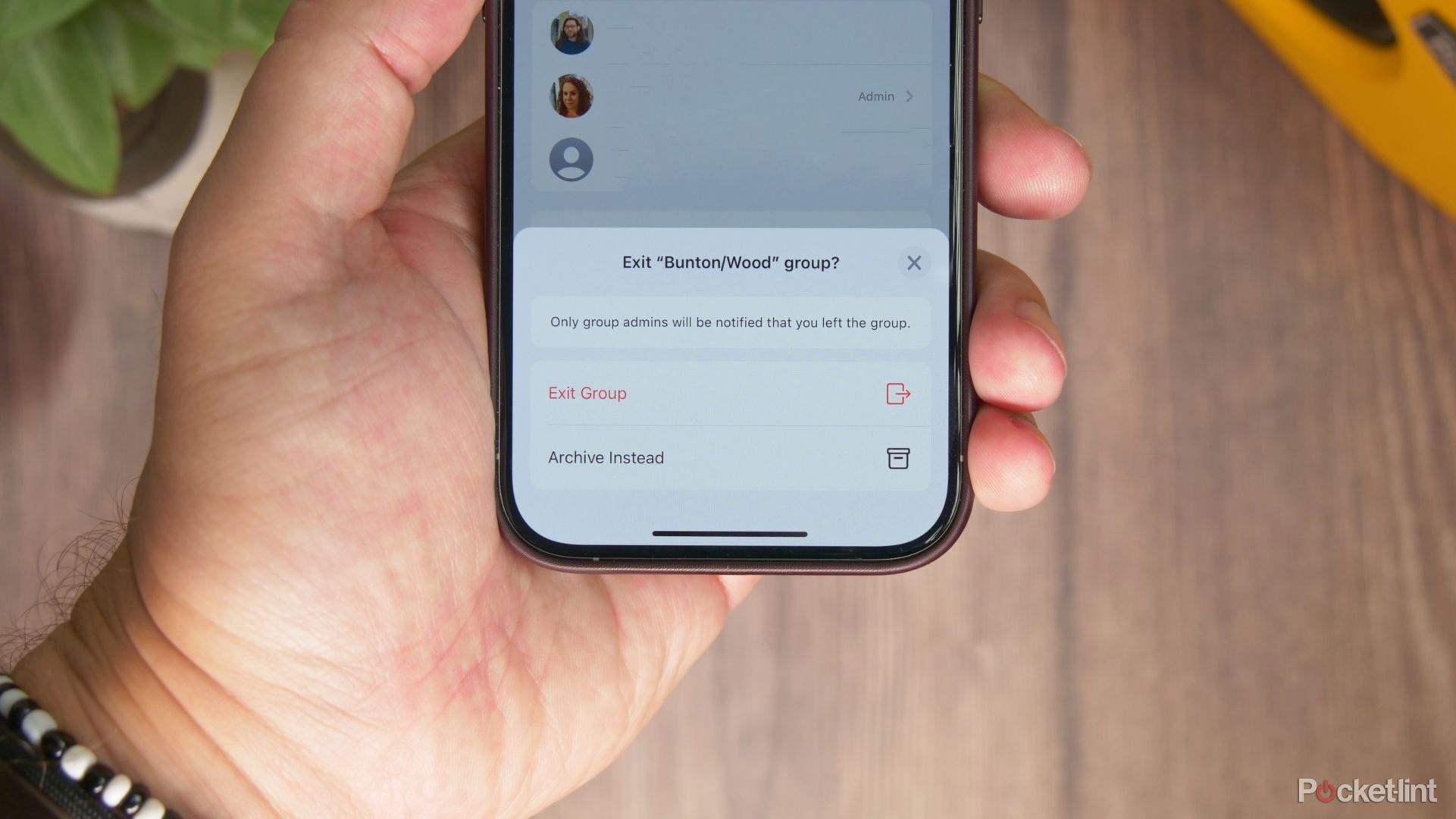
Related
How to leave a WhatsApp group without anyone knowing
If you need to leave a group chat without making a scene, here’s how to silently leave a WhatsApp group without drawing attention to yourself.
Because an increasing majority of Android phones come with Google Messages pre-installed or use it as their default messaging app, most RCS chats should be end-to-end encrypted, but encryption is not part of the protocol by default. In comments to the press when Apple announced it was adopting RCS, building end-to-end encryption into the base protocol was one of the things the company hoped to do.
Which phones and carriers support RCS?
RCS is almost universal
In the US, the major US carriers — Verizon, AT&T, Sprint and T-Mobile — have agreed on a cross-carrier solution for RCS in a program called CCMI — Cross-Carrier Messaging Initiative — and we’re now in a position where RCS is globally available and interoperable, except Russia. At Google I/O 2023, Google said there were over 800 million monthly RCS users.
If you send an RCS message to someone whose phone or mobile network doesn’t support it, it will be sent as a regular text message.
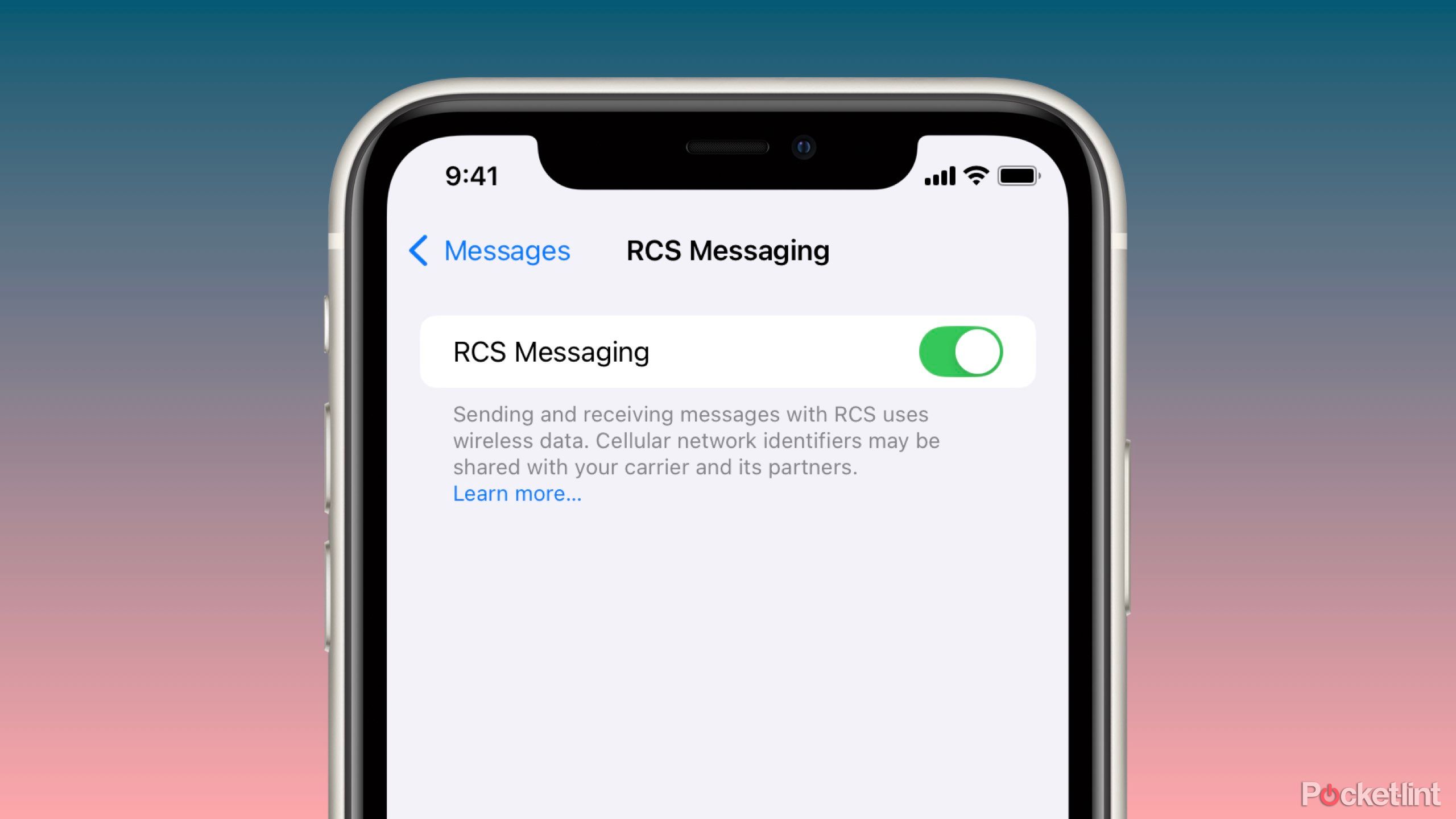
Related
What’s your personal go-to messaging app?
The text messaging landscape has been heating up lately, and the Rich Communication Services (RCS) protocol is playing a central role. RCS is a major upgrade over the old-school Short Message Service (SMS) and Multimedia Messaging Service (MMS) standards that have dominated the North American texting scene for many years now. RCS is a modern replacement that brings with it features first pioneered — and now commonplace — on internet-based direct messaging platforms. These perks include read receipts, typing indicators, better group chat support, higher quality image and video transfers, and, in some cases, encryption. While most of the world has moved on from texting and has instead embraced WhatsApp, Facebook Messenger, Viber, and other competing services, the same can’t be said for us here in the north-western hemisphere. In the United States and Canada in particular, Apple’s iMessage enjoys a massive install base alongside the continued usage of traditional SMS text messaging. Goo
Does the iPhone support RCS messaging?
RCS has finally made it to the iPhone in 2024
When Apple announced its pivot, it committed to using the GSMA Universal Profile for RCS. The RCS support that arrived with iOS 18 in September 2024 reflects that. Cross-platform messaging between Android and iOS devices absolutely works better than before and is enriched with things like audio messages and read receipts, but it’s still not perfect. You’ll still get a more feature-complete experience using Google’s version of RCS in Google Messages or sticking with iMessage.
Green bubbles have stuck around, and Apple supports things like typing indicators, high-resolution images and videos, voice messages, group chats, and file transfers. Notably missing is any kind of end-to-end encryption, though, which might require a switch to a different version of the GSMA Universal Profile than Apple is currently using. The company has shared no plans as to when that might change.

Related
7 features RCS should steal from Apple iMessage
RCS is coming to iPhone, but it’s missing some of iMessage’s best features.
Apple’s reasons for adopting RCS have less to do with Google’s taunts, and more the increased pressure it’s receiving from the EU due to the Digital Markets Act, and that 5G phones are reportedly required to support RCS in China.
Concerned users and Google have demanded Apple support RCS for years. Google has taunted Apple, with execs making statements about how RCS could make all devices work better together and more securely. The company’s even gone to town multiple times in videos and online campaigns.
The problem — especially for users in the US — is that iMessage is dominant and there’s a documented stigma among users against anyone messaging who isn’t using iMessage. Apple even makes messages sent from an Android phone (which defaults to SMS/MMS because Apple doesn’t yet support RCS) green, to differentiate them from blue messages sent by other people on iMessage. RCS support makes things a lot more equal now, but it’s not clear it’s going to change anything culturally.
Ultimately, Apple’s reasons for adopting RCS have less to do with Google’s taunts, and more the increased pressure it’s receiving from the EU due to the Digital Markets Act, and that 5G phones are reportedly required to support RCS in China.
How can I see if I have RCS support on my phone?
It should be turned on by default, but you can do it manually
Firstly, if you’re an Android user, you should use the Google Messages app and make sure it’s the default messaging app (while other apps will support it, Google’s approach means you need to use its own app).
- Open the app and tap the menu in the top right-hand corner.
- Select Messages settings.
- Select RCS Chats.
- RCS Chats will tell you if you have support or not, and if it’s enabled.
When you sign in to a new phone and open Google Messages for the first time, you’ll be asked if you want to turn on RCS Messaging. If you aren’t prompted, you can turn it on via the instructions above. In the same menu, you’ll also find other options, such as controlling typing indicators and read receipts. Note that you need wireless or cellular data to send RCS messages, so there’s also the option to send an SMS instead if RCS messages can’t be sent.
If you’re an iPhone user, Apple has designed the Messages app for iOS 18 to default to RCS if your carrier supports it, but you can also make sure RCS messaging is enabled in the Settings app.
- Open the Settings app.
- Scroll down to the Apps section and tap it.
- Tap on Messages.
- Tap on RCS Messaging under the Text Messaging section.
- Make sure RCS Messaging is toggled on.
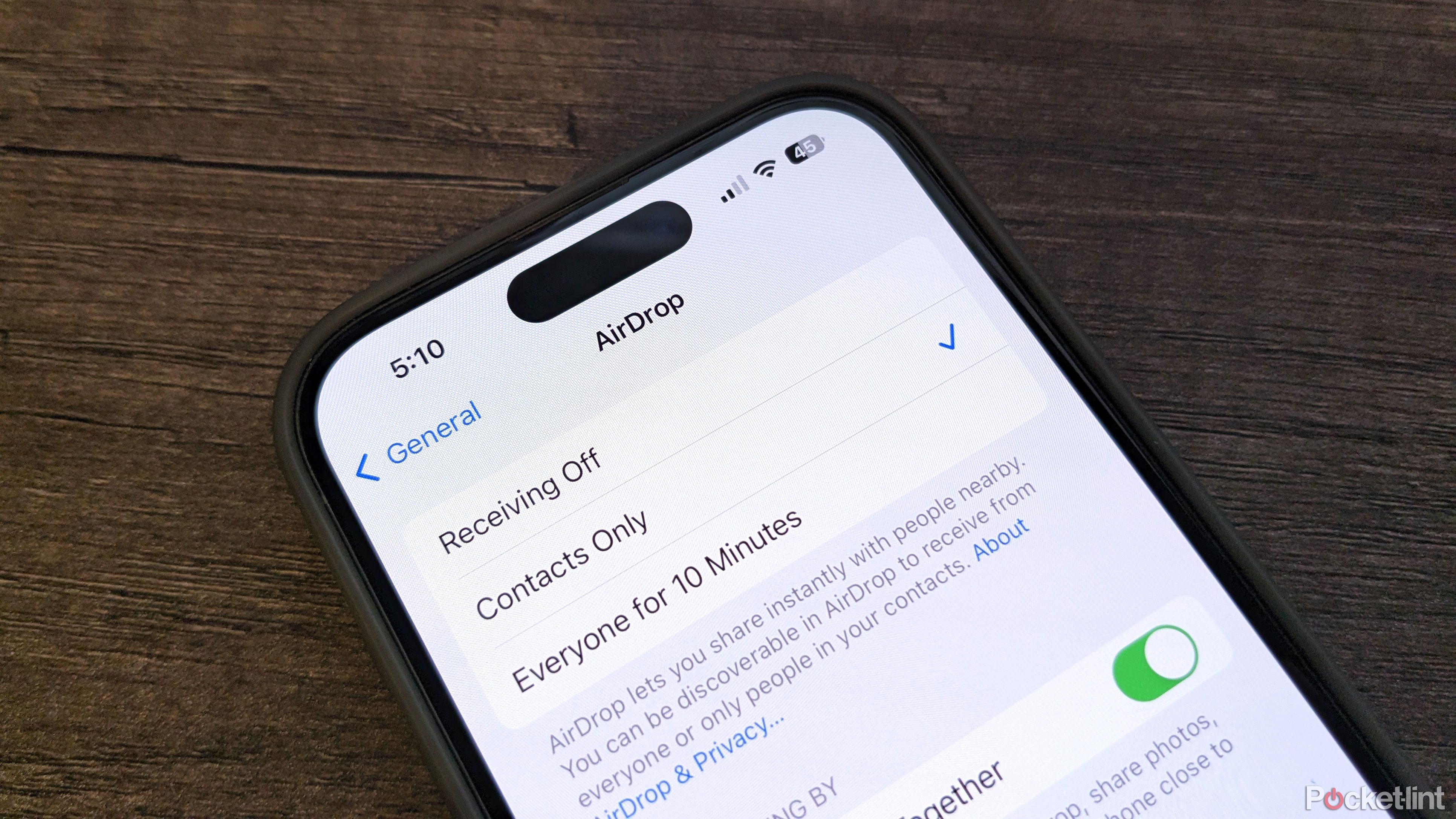
Related
Forget iMessage: should Apple make AirDrop a cross-platform service?
For years, many have been clamoring for Apple to bring its iMessage and FaceTime services to competing platforms like Android and Windows. Often left out of the conversation is the company’s underappreciated AirDrop system, which lets you wirelessly transfer files from one iDevice to the next. The service works quickly and efficiently, saving you from having to email yourself images or documents. Google has its own wireless transfer protocol called Quick Share (née Nearby Share), which only works with Android and ChromeOS. Then there’s Microsoft, which has implemented its own Windows Nearby Sharing protocol. These solutions all work well enough, but they’re proprietary and not fully interoperable across operating systems. Google has been kind enough to build a new Quick Share app for Windows, but good luck sharing a photo from Android to macOS, or from Windows to iPadOS. Considering how ubiquitous wireless file sharing has become, and how rare it is for people to use a wired connection
Trending Products
